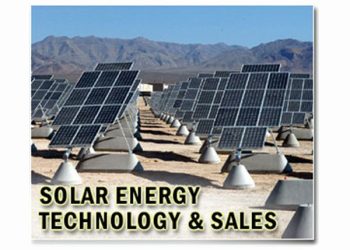New method boosts solar cell efficiency by fine-tuning nanorod spacing
by Riko Seibo
Tokyo, Japan (SPX) Jul 08, 2025
A team of Chinese scientists has developed a breakthrough technique to fine-tune the spacing of titanium dioxide nanorods-tiny structures key to improving solar energy conversion-without changing their shape or size. The result: solar cells that are not only more efficient but easier to produce at scale.
Led by Prof. Wang Mingtai at the Hefei Institutes of Physical Science, the researchers achieved precise control over nanorod density using a refined growth process. Their method allows them to adjust how closely nanorods are packed while keeping each rod’s diameter and height consistent-a long-standing challenge in nanomaterials engineering.
Titanium dioxide (TiO2) nanorods are valued in solar energy systems for their ability to absorb light and transport charge efficiently. However, traditional fabrication techniques often tie the rod’s spacing to other factors like size and length, limiting the flexibility to optimize device performance.
In their new approach, the researchers extended the hydrolysis step during precursor film preparation. This change led to the formation of smaller anatase nanoparticles, which then transformed into rutile seeds during hydrothermal treatment-seeds that guided uniform nanorod growth. This tweak gave them a powerful lever to control rod spacing independently.
The team then integrated these nanorod films into CuInS2 solar cells processed at low temperatures. The results were striking: power conversion efficiencies exceeded 10 percent, with a peak performance of 10.44 percent. To explain the efficiency gains, the team proposed a Volume-Surface-Density model that links nanorod density to improved light trapping, charge separation, and carrier movement.
This innovation not only enhances the performance of solar cells but also provides a new framework for designing nanostructures in clean energy and optoelectronic applications. By connecting processing techniques with material behavior and device function, the study offers a robust path toward scalable, high-efficiency solar technologies.
Research Report:Unveiling Growth and Photovoltaic Principles in Density-Controllable TiO2 Nanorod Arrays for Efficient Solar Cells
Related Links
Hefei Institutes of Physical Science
All About Solar Energy at SolarDaily.com


















